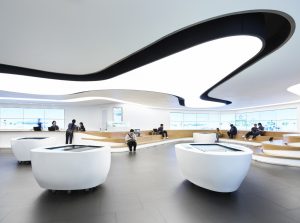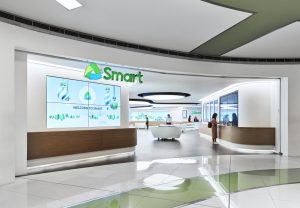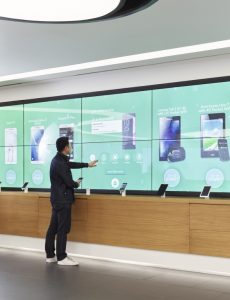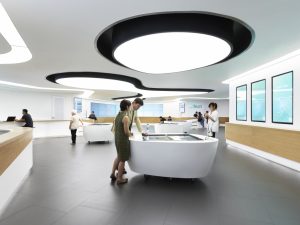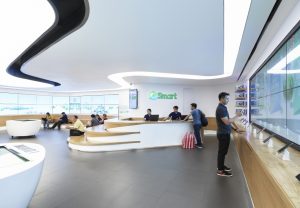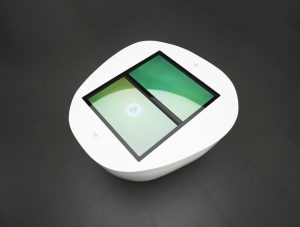When architecture and design firm NBBJ was called upon to help create major communications company PLDT’s (Makati, Philippines) latest flagship/concept store, Smart, it envisioned an engaging, modular experience for its visitors.
“A flagship is different than a standard store, therefore it’s especially important to create a strong brand identity,” explains Sung Cho, senior project designer, architect, NBBJ, about the project’s goals. In addition to creating a physical dimension of the brand and communicating its promises in store, most important, according to Cho, was creating a social space.
The open format is filled with sweeping organic shapes, from the expansive lighting treatments to its architectural features. The edges of the space extend outward in various spots, creating staggered seating areas. Its layout can be rearranged to accommodate certain events, and “egg-shaped” digital displays on the sales floor are equipped with wheels for easy mobility. Other interactive digital touchpoints throughout engage customers and visitors, as does its petite in-store café.
“In the Philippines, architectural integration of digital elements isn’t very common,” says Sam Stubblefield, principal, NBBJ. Despite the tech-centric nature of the product – smartphones and home security, primarily – PLDT was most interested in encouraging people to interact with each other in store.
“We designed from a [social] perspective, so when you enter the store, you first see people connecting,” Cho says.
Informational screens are eye-level on the wall – what Stubblefield calls “heads-up culture” – so people aren’t only looking down at the phones. Other digital offerings include games and interactive software to help shoppers engage one another.
Advertisement
The sales associates are also on the floor to help guide customers. For example, if a customer must sign a contract during a purchase, associates can easily access blank paperwork stored inside some of the benches built into the store’s wood-paneled perimeter.
“The biggest challenge was figuring out how to convert the wire-framed digital experience and concepts within the tight timeframe,” says Stubblefield about the specified digital equipment and content for the on-floor displays. “We pooled our resources from digital vendors – it was an all-hands-on-deck mentality that got it done.”
In the end, Stubblefield is satisfied with the seamless in-store experience: “More and more, we’re seeing the [desire] to have the ‘digital’ and ‘physical’ divide close,” he says. “They’re all just tools in the toolkit, helping us create architecture and helping serve customers a better environment.”
Correction: In print and in the August digital edition of the magazine, this originally stated that NBBJ is headquartered in Seattle, which was an editorial error.
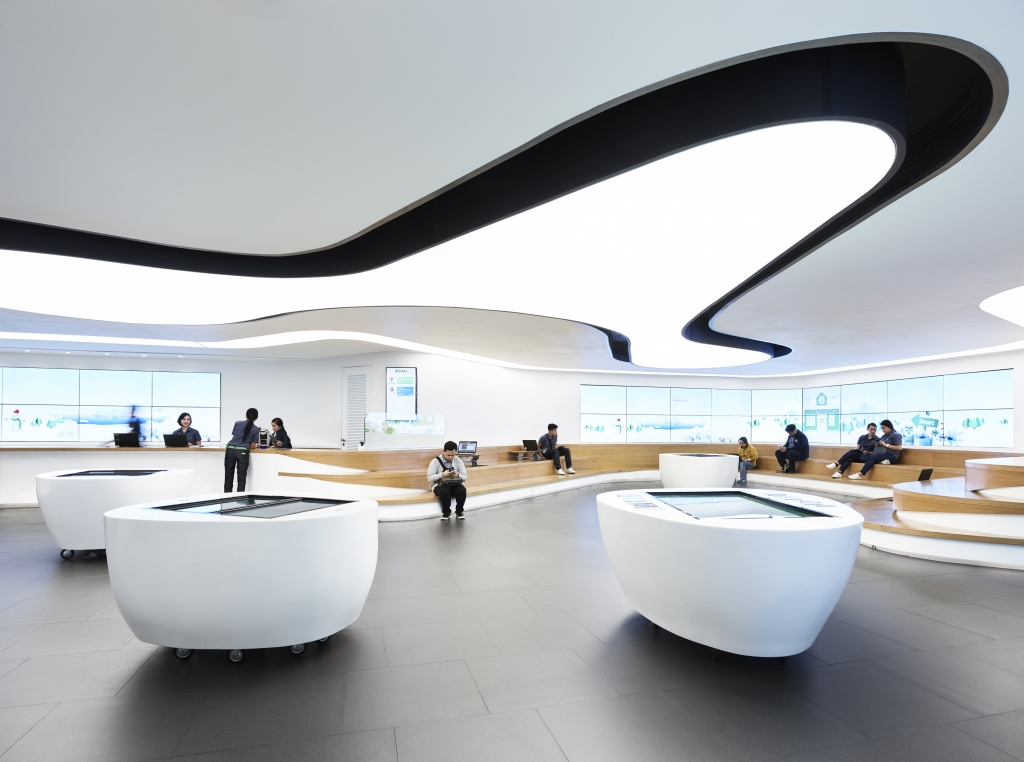

 Headlines1 week ago
Headlines1 week ago
 Photo Gallery23 hours ago
Photo Gallery23 hours ago
 Headlines2 weeks ago
Headlines2 weeks ago
 Headlines2 weeks ago
Headlines2 weeks ago
 Sector Spotlight1 week ago
Sector Spotlight1 week ago
 Headlines1 week ago
Headlines1 week ago
 Headlines1 week ago
Headlines1 week ago
 Headlines2 days ago
Headlines2 days ago
